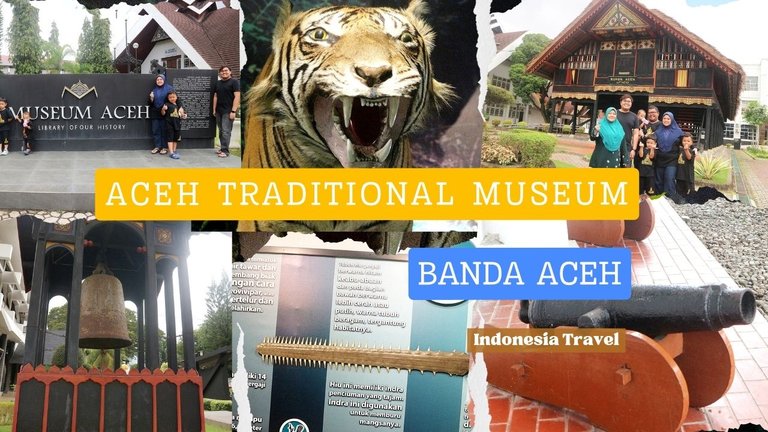
Hello everyone, how are you today, of course you are fine and having a nice day, I hope so. As I said in my previous post, I will continue to tell you all about places worth visiting if you are on holiday in Aceh.
Banda Aceh is located at the westernmost tip of Indonesia, precisely in the northern part of Sumatra Island. This city is the capital of Aceh Province and also serves as the center of government, economy, and culture in the region. Banda Aceh is located near the Strait of Malacca, which is one of the busiest international waterways in the world. This city is also a gateway to various tourist destinations in Aceh, such as Pulau Weh which is famous for its underwater beauty. To the north, Banda Aceh is bordered by the Andaman Sea, while to the south and east it borders Aceh Besar Regency.
In Banda Aceh City, there are many places that we can visit if we go on holiday here, especially since Banda Aceh is the location of the Tsunami decades ago, of course there are many historical sites about the Tsunami which are historical, religious, and even educational tourist destinations for tourists regarding information about the tsunami incident in Banda Aceh.
To find out the location of this museum in detail, you can also search for the location at WorldMapPin , with location code: [//]:# (!worldmappin 5.54855 lat 95.32099 long Mesium Aceh d3scr)
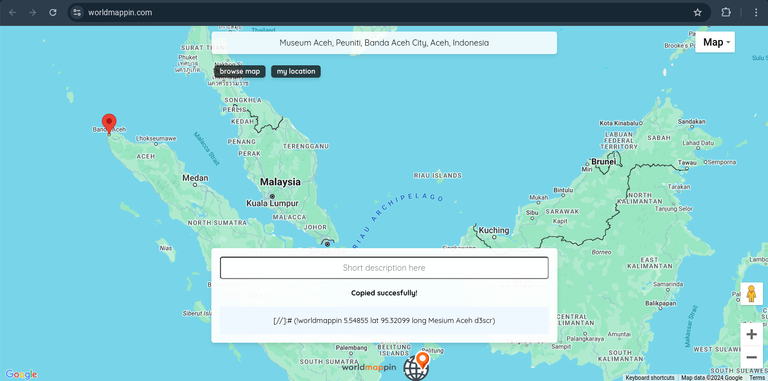
Since our accommodation is located in the city center, the closest place for us to visit is the Aceh Museum. This Aceh Traditional Museum is located on Jalan Sultan Alaidin Mahmudsyah No. 10, Peuniti, Baiturrahman District. This location is in the center of Banda Aceh, close to several other important landmarks such as the Baiturrahman Grand Mosque, one of the largest and most famous mosques in Aceh. The location of this museum is easy to reach and is often a destination for tourists who want to learn more about the history and culture of Aceh.
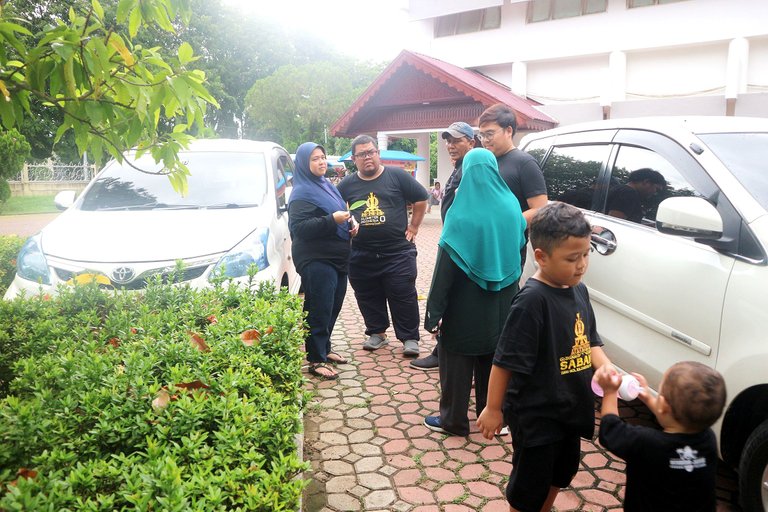
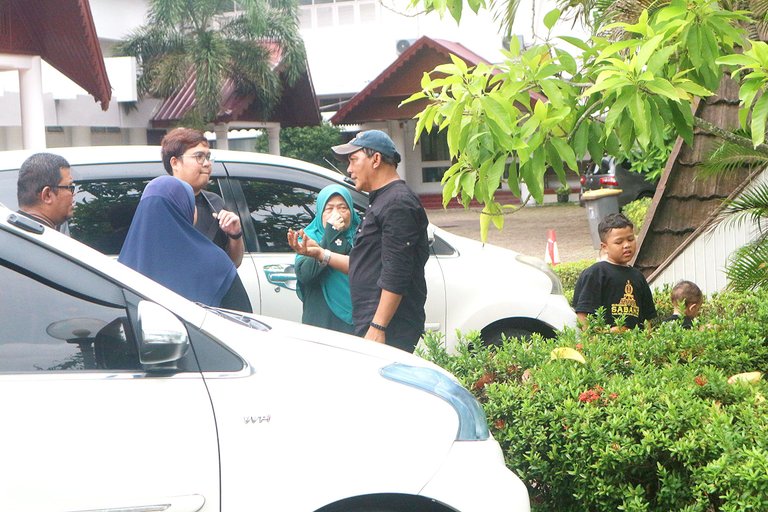
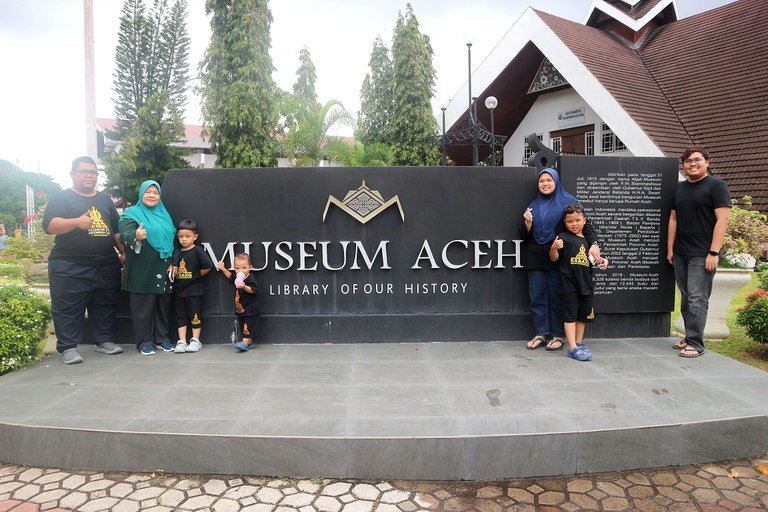
The Aceh Traditional Museum is one of the oldest museums in Indonesia, and it contains various collections that reflect the history, culture, and life of the Acehnese people. The main building of the museum has traditional Acehnese architecture and is shaped like a stilt house, known as Rumoh Aceh.
The total area of the Aceh Museum grounds is approximately 10,800 square meters. Within this area, there are several important buildings, including the main museum building, Rumoh Aceh (traditional Acehnese house), as well as various monuments and artifacts displayed in the open yard. The size of the grounds allows visitors to enjoy the expansive view and explore the museum's diverse collections in a comfortable atmosphere.
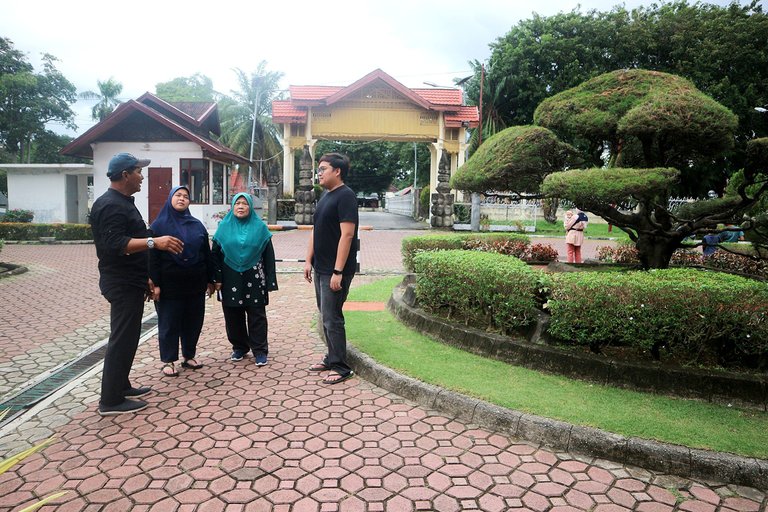
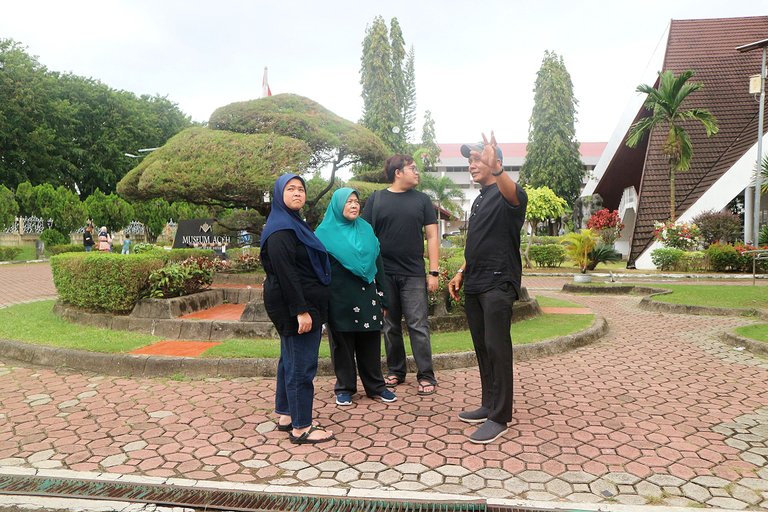
As soon as we enter the Mesium gate, one of the things we will find in the Mesium yard is "Rumoh Aceh",which is a traditional house for the Acehnese tribe.

Acehnese Traditional House, or often called Acehnese House, is a traditional Acehnese house that reflects the cultural heritage and architecture typical of Aceh Province. Acehnese House is known for its unique and functional design, designed to adapt to local environmental conditions, such as tropical climate and frequent earthquakes. Acehnese House is built as a stilt house with a height of about 2.5 to 3 meters from the ground. This provides protection from floods, wild animals, and keeps the house cool with good air circulation.
Acehnese houses are generally made of wood, especially hardwoods such as meranti or jackfruit, which are known to be durable. The roof usually uses rumbia leaves or ijuk which helps keep the house cool. The walls and pillars of Acehnese houses are often decorated with intricate wood carvings, containing motifs of flowers, plants, and Acehnese cultural symbols. These carvings not only function as decoration, but also have spiritual and cultural meanings. This house is usually built with a certain orientation, adjusting the direction of the wind and the position of the sun to maximize natural ventilation, thus making the house comfortable even in hot weather. Acehnese houses are not only a place to live, but also a symbol of identity and pride of the Acehnese people, reflecting a way of life that is in harmony with nature and strong cultural beliefs.
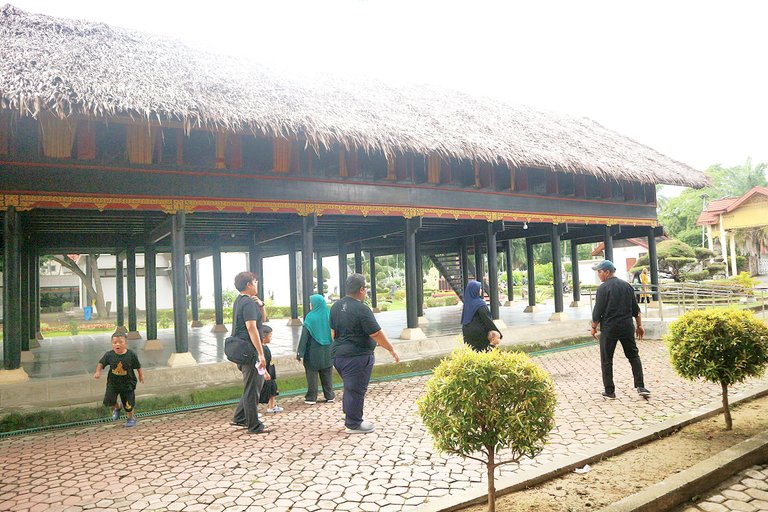
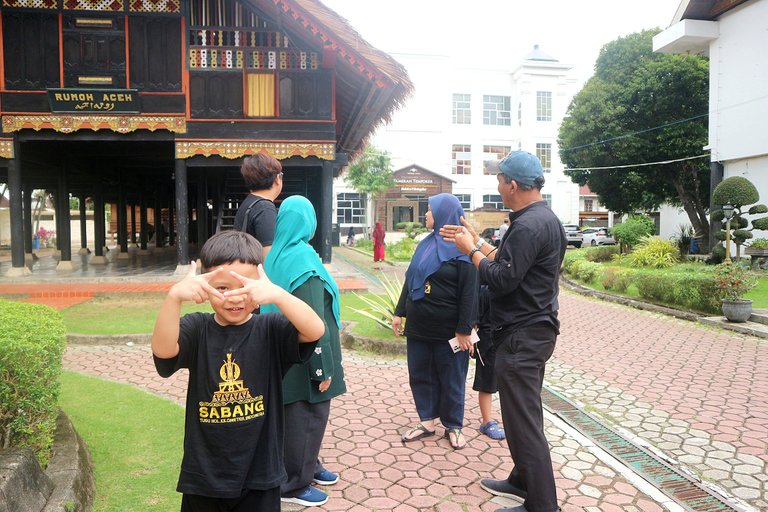
The stairs to enter the house are usually located at the front or side. These stairs are made quite high, with an odd number of steps, which is believed to have symbolic meaning in Acehnese culture. One of the characteristics of the Rumoh Aceh stairs is the odd number of steps, usually consisting of 7, 9, or 11 steps. This odd number has symbolic meaning in Acehnese culture, often associated with beliefs in good luck and protection from bad things. Angga also functions as a place for social interaction. Male guests usually sit on the front porch after climbing the stairs.
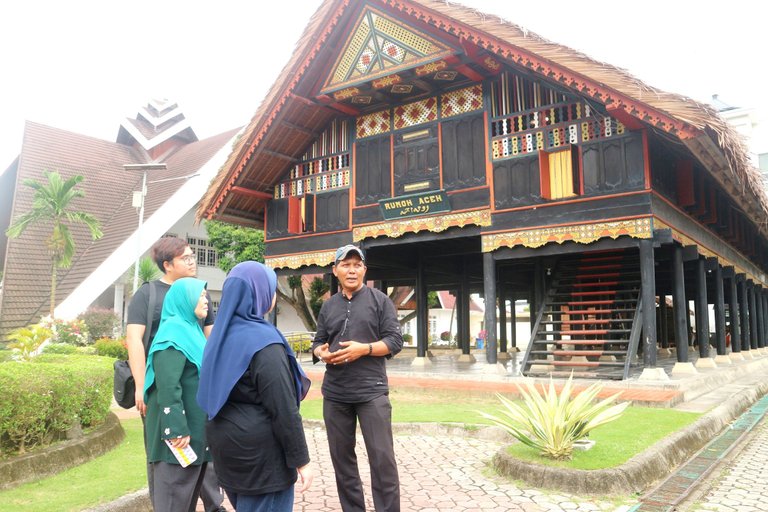


The Rumoh Aceh stairs are not only a structural part, but also an important element in the social and cultural life of the Acehnese people. These stairs reflect respect for tradition, spiritual values, and the relationship between the residents of the house and their environment.
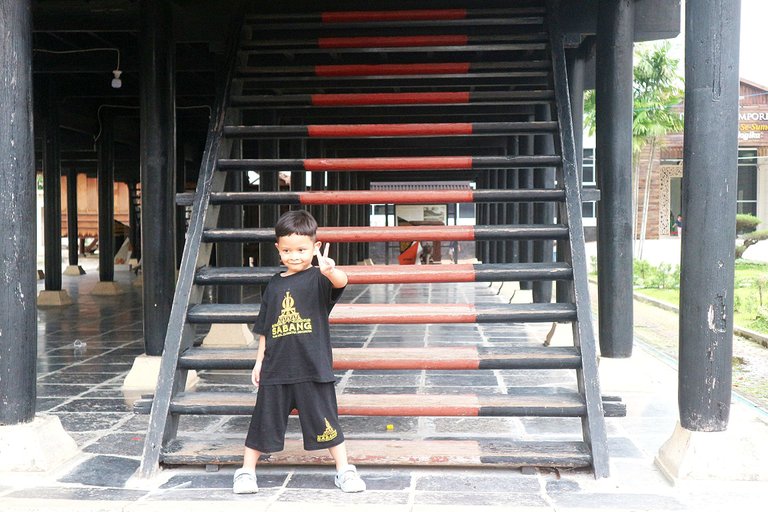
The rooms inside the Rumoh Aceh are generally spacious and do not have many permanent partitions. The walls and pillars inside the house are often decorated with intricate wood carvings, featuring floral motifs, plants, and Acehnese cultural symbols. These carvings not only serve as decoration, but also reflect the social status and spiritual beliefs of the homeowner. Because the house is built on pillars, air circulation inside the house is very good, so the room remains cool even though the weather outside is hot. Wind can easily blow under and through the house, keeping the temperature inside the house comfortable. The atmosphere inside the Rumoh Aceh strongly reflects a life in harmony with nature and culture, with an emphasis on comfort, togetherness, and tradition. Every element in this house is designed to support a simple yet meaningful life.
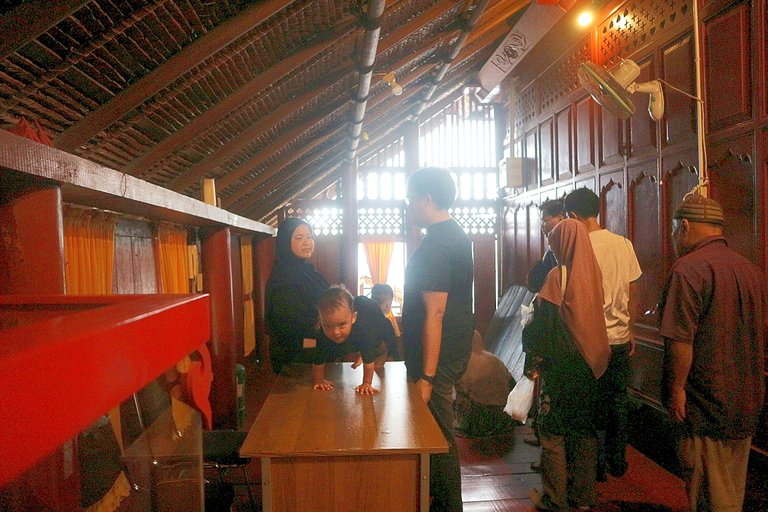
In addition, under the traditional Acehnese house there is a "Jeungki", the existence of Jeungki in every house of the Acehnese people in ancient times is a tradition passed down from their grandparents.
Jeungki is a traditional tool typical of Aceh which is used to pound rice. This tool plays an important role in the agrarian life of the Acehnese people, especially in the process of processing rice into rice.
Jeungki consists of two main parts, namely a long stem (similar to a large log) and a mortar (a concave part where the rice is placed to be pounded). This log is usually about 1.5 to 2 meters long, and has a large enough diameter to provide strength and balance when used.
Jeungki is made from strong and durable wood, such as meranti wood, jackfruit wood, or other wood available in the area. Wood is chosen because of its ability to withstand pressure and continuous use. The mortar is usually made from a single large log that is hollowed out in the middle to create a concave space where the rice will be placed. The mortar can stand alone or be attached to a special structure that holds it in place.
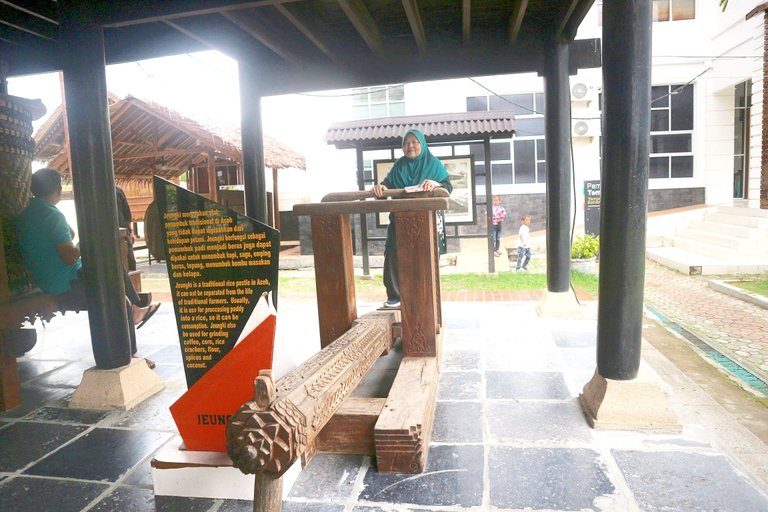
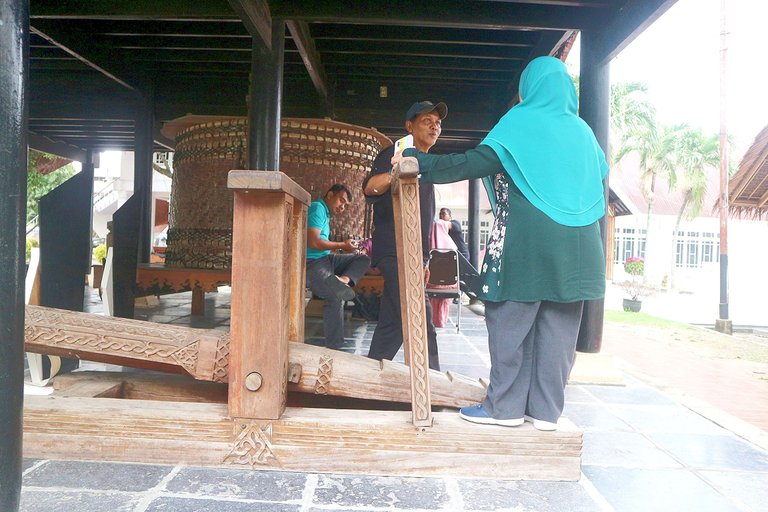
Jeungki is used by lifting and pressing the wooden pole downwards to pound the rice placed in the mortar. The user usually stands at one end of the Jeungki, using the weight of the wooden pole and the force of gravity to crush the rice husks and release the rice grains from their husks.
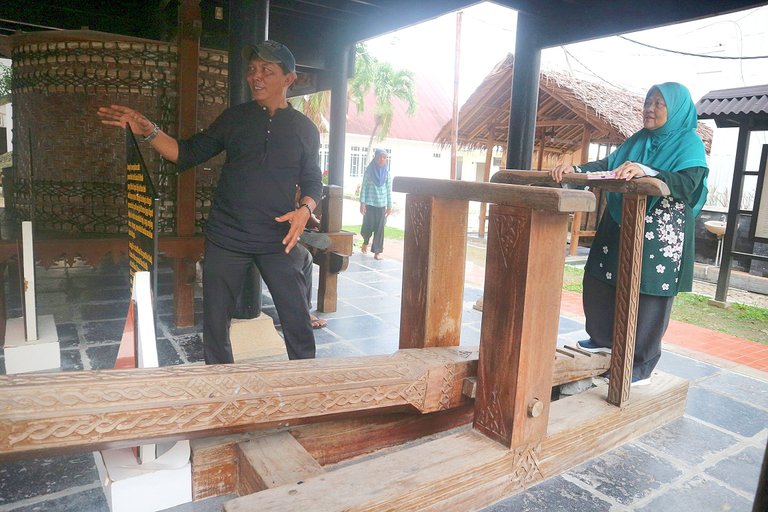
In addition to Jeungki, another traditional tool that we usually find under the traditional houses of the Acehnese people is "Geureubak". Geureubsk is a traditional means of transport for lifting goods that is driven by the power of oxen or buffalo.
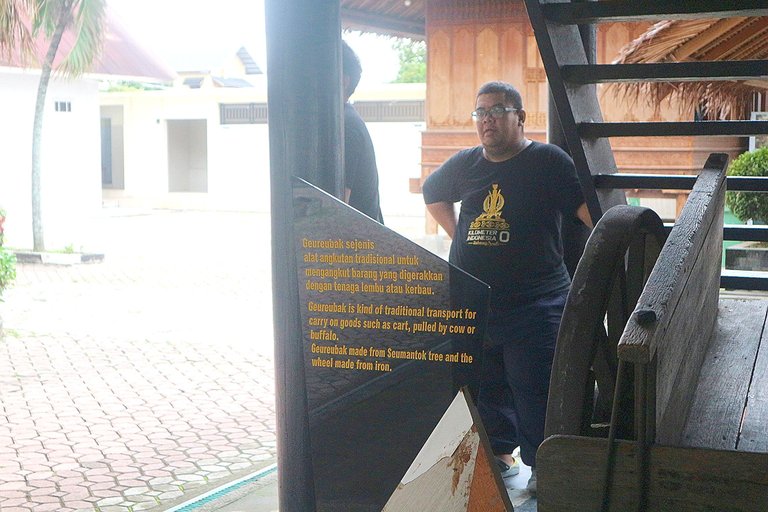
The tradition of the Acehnese people in certain people's homes has a jambo, Jambo is one of the important traditional structures in Acehnese culture, especially in rural areas. Jambo functions as a multifunctional building that is usually separate from the main house and is often used for social activities, storage, or a place to rest. Jambo is often used as a place to rest or sleep for male family members, especially during the harvest season or when working in the fields. It provides comfort and shade from the hot midday sun. Jambo also functions as a gathering place to chat, relax, or receive guests who come for light business. Because it is located outside the main house, jambo becomes a more relaxed and informal place. In some cases, Jambo is used to store agricultural products such as rice, corn, or agricultural tools. With a raised position, Jambo protects the harvest from moisture and insects. In Acehnese agrarian culture, Jambo is often built near rice fields or gardens, so that it can be used as a place to shelter while working or as a temporary residence during the planting or harvest season.
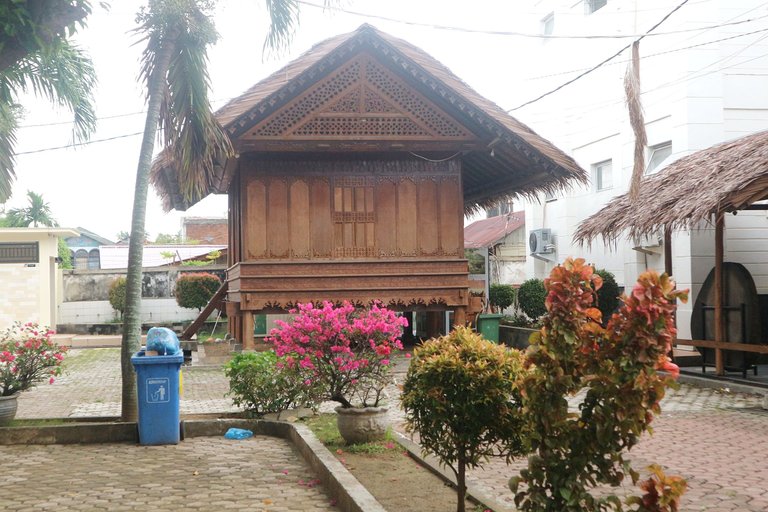
So, what else can we find in this Aceh Traditional Museum? Next to the traditional Acehnese house there is a "Cakra Donya Bell". The Cakra Donya bell is one of the most important historical and cultural artifacts in Aceh, Indonesia. This bell is known for its beauty and deep meaning in the history and traditions of Aceh. This bell is made of metal, usually a mixture of bronze or copper, which is known to be strong and durable. The metal was chosen because of its ability to produce a clear and resonant sound. The Cakra Donya bell is often used in various rituals and traditional ceremonies in Aceh. Its distinctive sound is considered to have spiritual power and is able to influence the atmosphere in religious or traditional ceremonies. This bell is also used as a tool to call people, mark certain times, or give signals in social and religious activities.
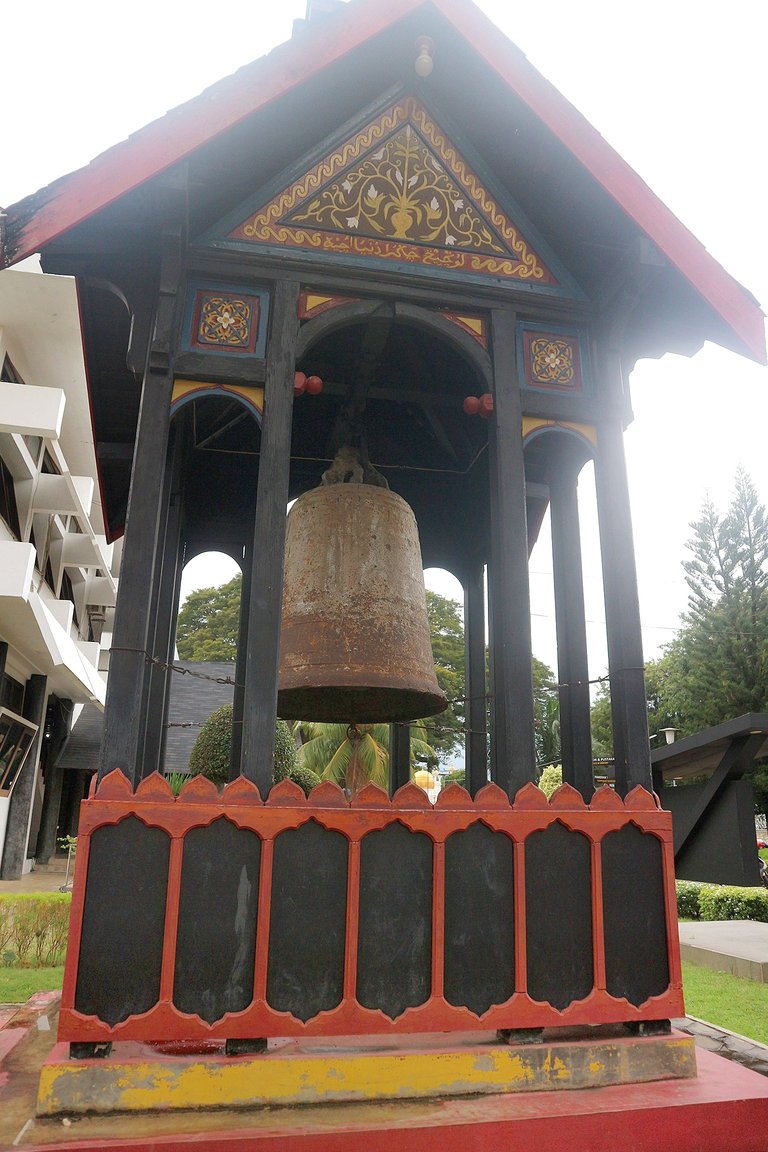
In the Aceh Traditional Museum area there is also the "Puntung Cannon". The Puntung Cannon is one of the very important historical relics in Aceh, Indonesia. This cannon is part of Aceh's cultural and historical heritage which has high historical value. The Puntung Cannon is a cannon made of metal, usually iron or bronze, cylindrical in shape with an explosive tip, designed to fire a powerful shot. The Puntung Cannon was used as a defense weapon in the past. This cannon was installed in a fort or strategic position to protect the area from enemy attacks. The Puntung Cannon is a relic from the historical period of Aceh, especially during the Aceh Caliphate or the times of battle with the invaders. This cannon reflects the military skills and technology of that time.

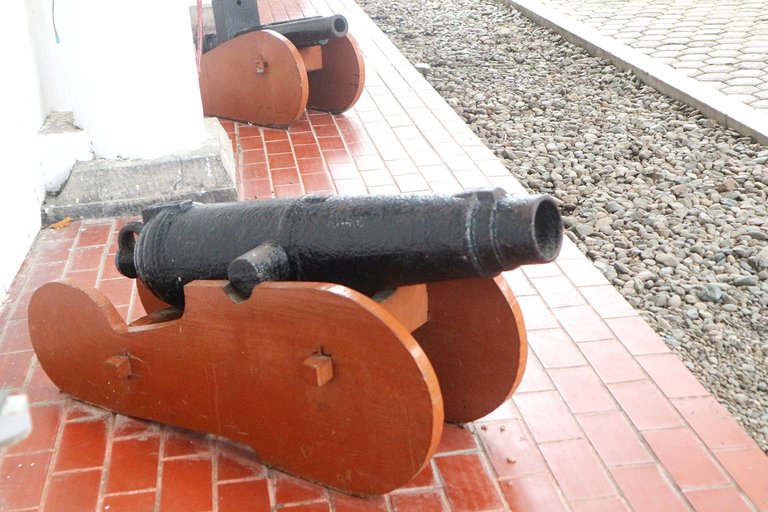
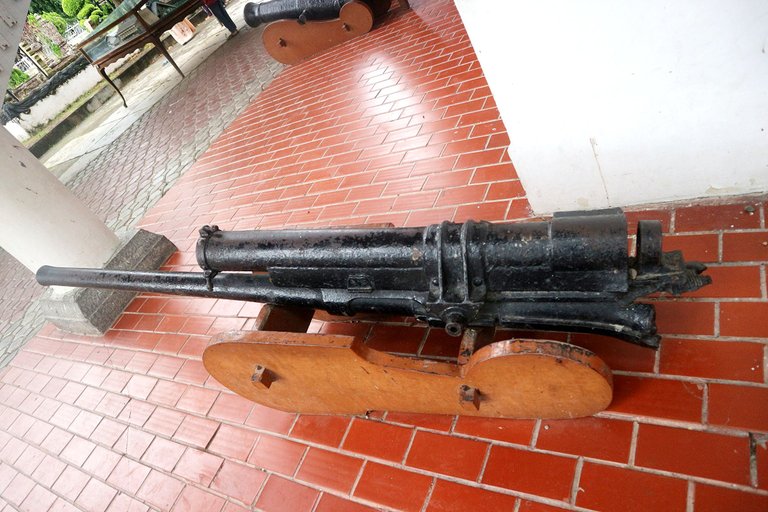
Beside the Aceh Traditional House building, there is also the Acehnese Royal Tomb of the Bugis Dynasty. The Tomb of the Acehnese Kings of Bugis descent is one of the important historical sites in the history of Aceh, especially because of the relationship between Aceh and the Bugis kingdoms in South Sulawesi. Several Acehnese kings in the past were of Bugis descent, who came from South Sulawesi. They are known as part of the ruling dynasty in Aceh and played an important role in the political and social history of Aceh. One of the famous Bugis descendant kings is Sultan Iskandar Muda, who is known as a strong and wise ruler. However, there are also other Bugis descendant kings who ruled in Aceh. The materials used often include brick, natural stone, or marble. The tombs can be decorated with carvings or ornaments depicting symbols of power and culture of Aceh and Bugis.
These tombs are usually decorated with elaborate carvings or inscriptions that list the king's name, title, and reign. These carvings often feature Acehnese and Bugis cultural motifs. The tombs of Acehnese Bugis kings are an important part of Aceh's historical and cultural heritage. These tombs serve not only as final resting places, but also as symbols of the historical ties and cultural influences between Aceh and the Bugis kingdoms. The sites are revered and well-maintained, providing insight into the rich and complex pasts of both cultures.

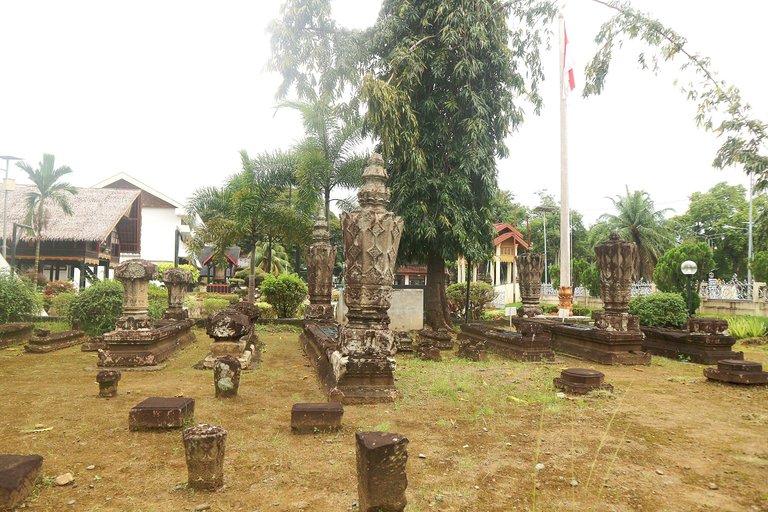
After finishing touring around the Traditional House of the Acehnese Tribe, we moved to the Aceh History Exhibition Building next door. Inside the building, there are many historical relics of Aceh in the past which are now on display as historical education for anyone who visits this place.
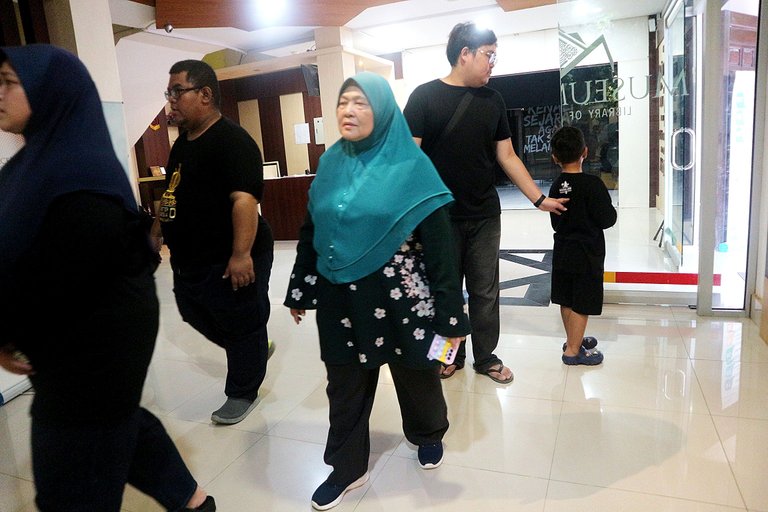
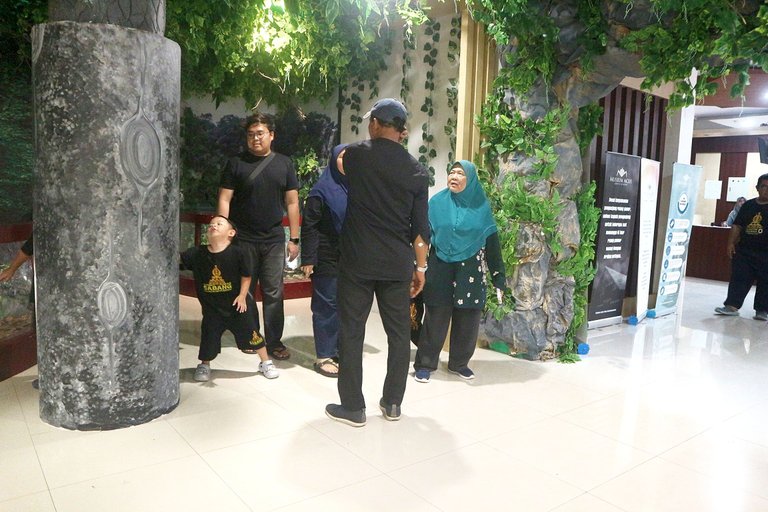

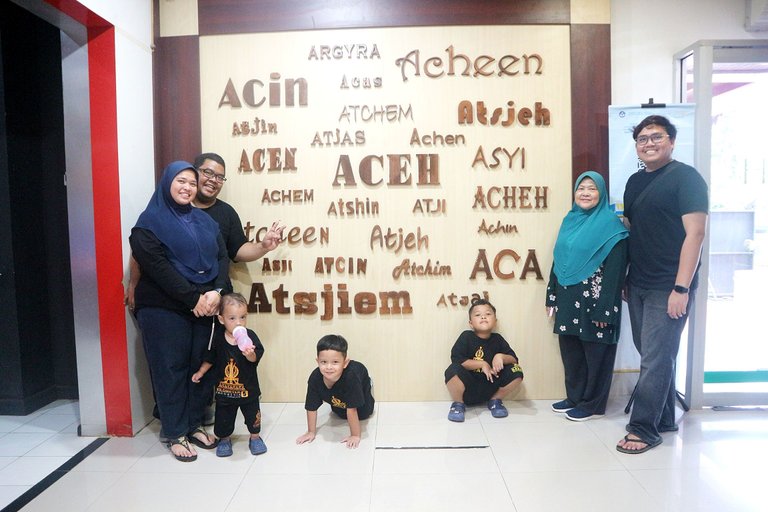
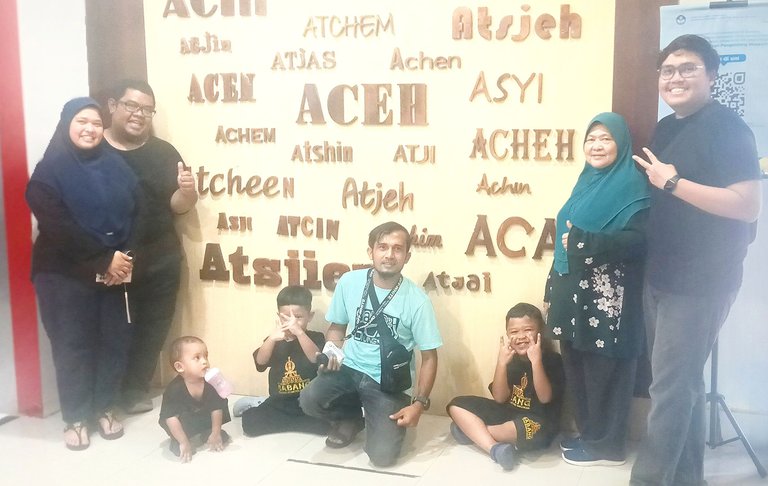
While inside the Aceh history exhibition building, we saw a map of Aceh with a shape that had been divided into certain colors according to the number of tribes in Aceh, and the museum guide explained to us about the tribes in Aceh according to the areas they occupied on the map displayed in the Aceh History Exhibition Museum. In Aceh, there are 13 tribes according to what we know, including: Aceh Tribe, Gayo Tribe, Alas Tribe, Kluet Tribe, Seumeulue Tribe, Tamiang Tribe, Pasir Tribe, Jamee Tribe, Aceh Tamiang Tribe, Aceh Singkil Tribe, Ancient Tamiang Tribe, Leuser Tribe, and Kerinci Tribe.
Each tribe has different languages, customs and cultures according to their respective ethnic groups, this is the richness of cultural diversity in Aceh.
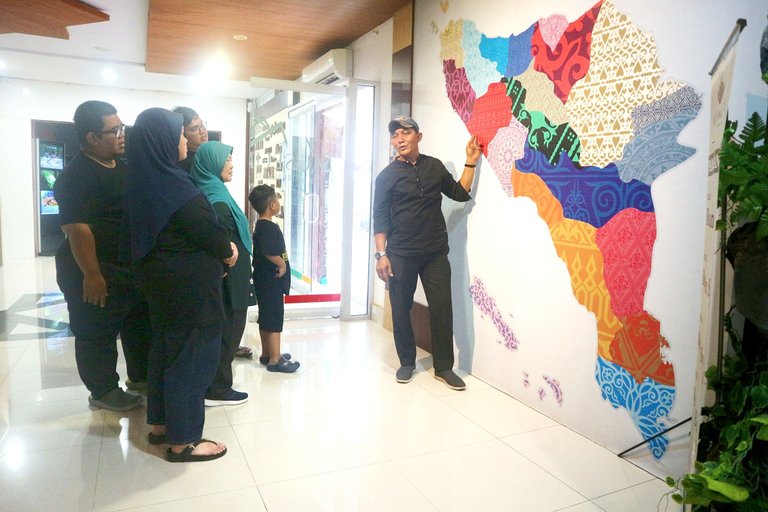
In addition, photos of Acehnese heroes are also exhibited here, one of which is the first female Admiral in the world who was a female Acehnese hero who was highly respected by the enemy at that time, namely "Admiral Malahayati".
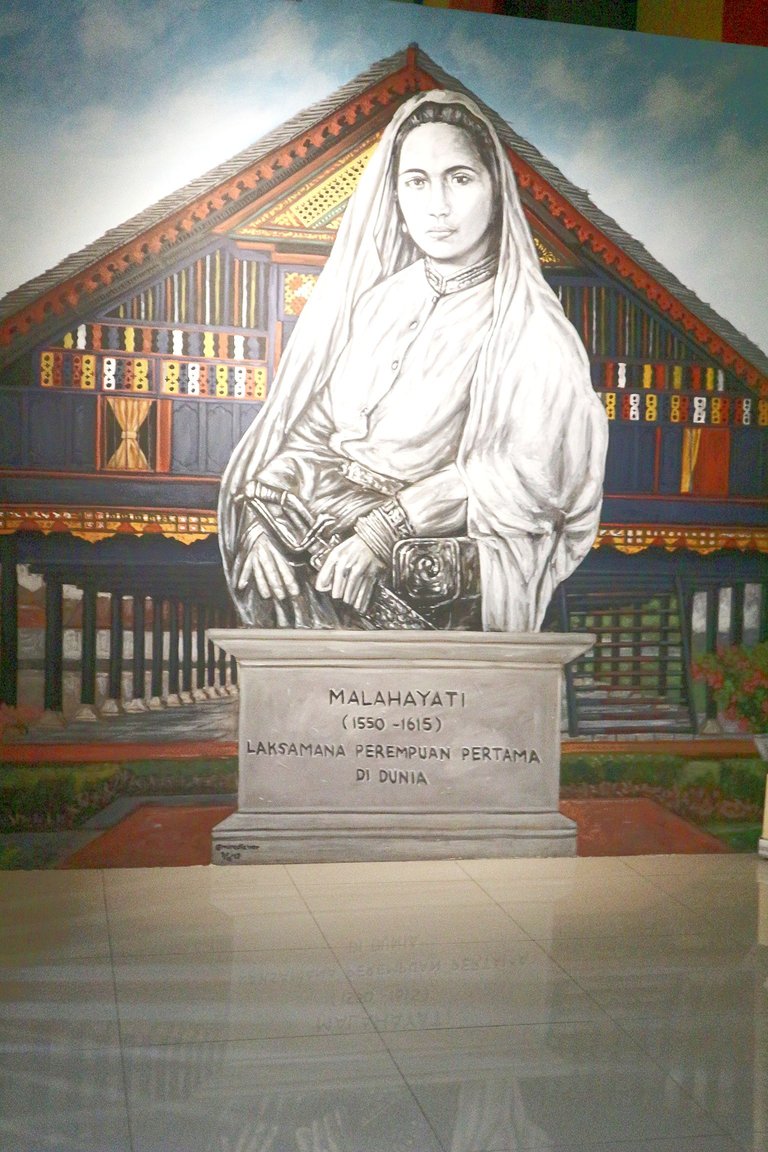
Admiral Malahayati is an Indonesian national hero and legendary figure from Aceh. She is known as one of the women who played an important role in the military history of Aceh in the late 16th and early 17th centuries. Admiral Malahayati was the best graduate of the Askari Baitul Muqaddas Aceh Royal Military Academy Sultan Selim II in Bital, Aceh. The admiral who made the strongest maritime in Southeast Asia in the 16th century. was also an expert in diplomacy and war strategy who led 2,000 female troops called by the Acehnese as the "Inong Bale Troops".
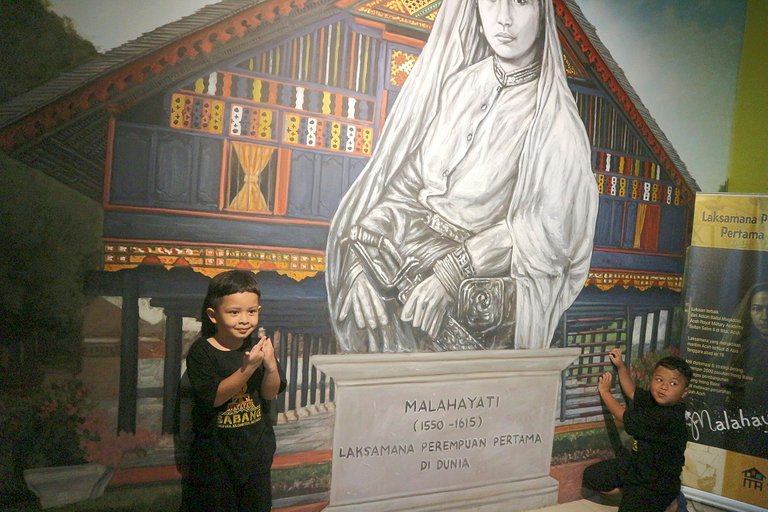
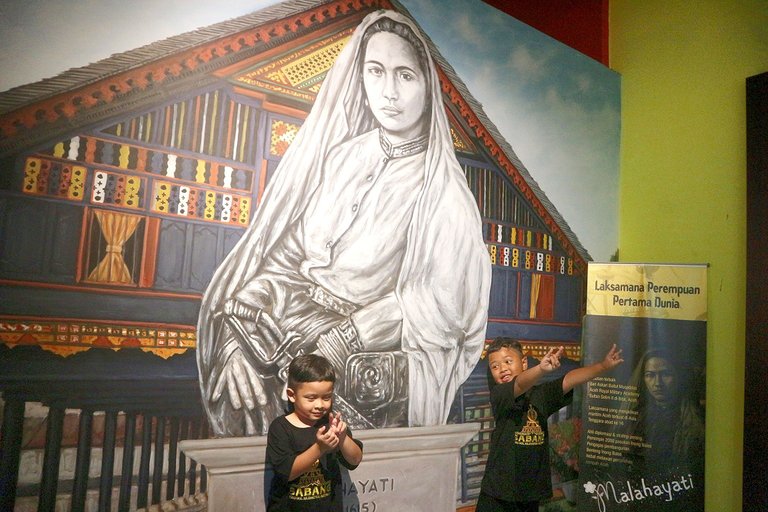
The miniature of the magnificent and historic Baiturrahman Mosque is also in this museum, with this we can study the aspects of the historic mosque building from various angles of its building form. Baiturrahman Mosque was founded in 1612 by Sultan Iskandar Muda, one of the famous rulers of Aceh.
This mosque is one of many mosques built during his reign.
The Baiturrahman Mosque has a distinctive Acehnese architectural style with influences from various traditions, including Arabic, Persian, and local. Its design combines traditional Acehnese elements with beautiful details. The Baiturrahman Mosque survived the tsunami that hit Aceh in December 2004. The mosque building stands tall amidst the destruction, becoming a symbol of resilience and hope for the people of Aceh. After the tsunami, the mosque underwent renovation and restoration to repair the damage and maintain its architectural beauty. This process was carried out carefully to maintain its historical value.
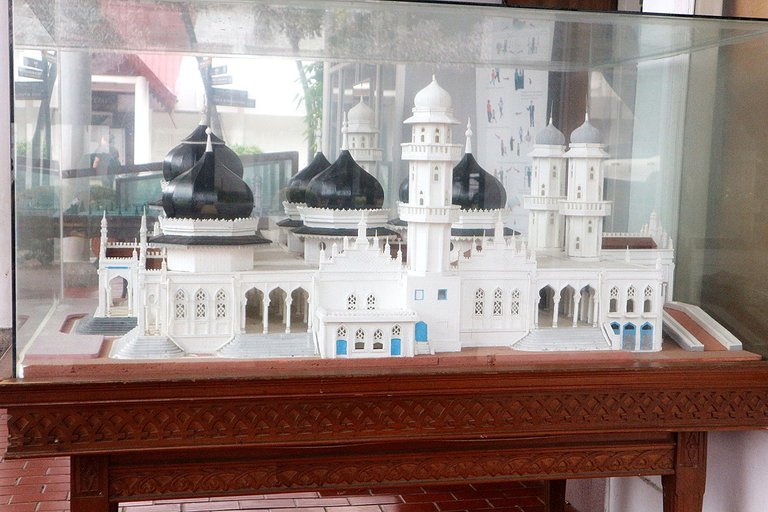
Next is the Saw Shark, or the snout of the Giant Saw Shark. The snout of the Saw Shark is exhibited at the Aceh Museum as an educational material for tourists who come to visit this museum.
This Saw Shark is a freshwater fish that reproduces by Ovovivipar, or laying eggs and giving birth. This fish has 14 to 22 saw teeth on each side, and its size can reach up to 6.6 meters, the body of the Saw Shark is black to gray, and on the bottom it is brighter or white, its body color varies, all depending on the color of its habitat, this type of shark has a sharp sense of smell, this sense is used to hunt its prey. The Saw Shark type is spread in tropical areas that spread across Australia, India, Indonesia, Papua New Guinea, South Africa, and Thailand.
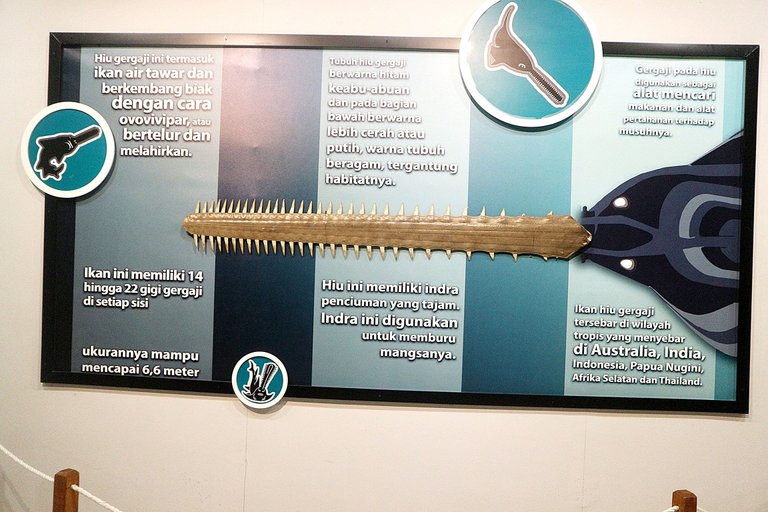
In this museum there is also Leuser Park, which is an illustration of the life of flora and fauna in the Leuser protected forest. One of the interesting things in this park is the statue of the Sumatran tiger, which is shaped so similar to the original.
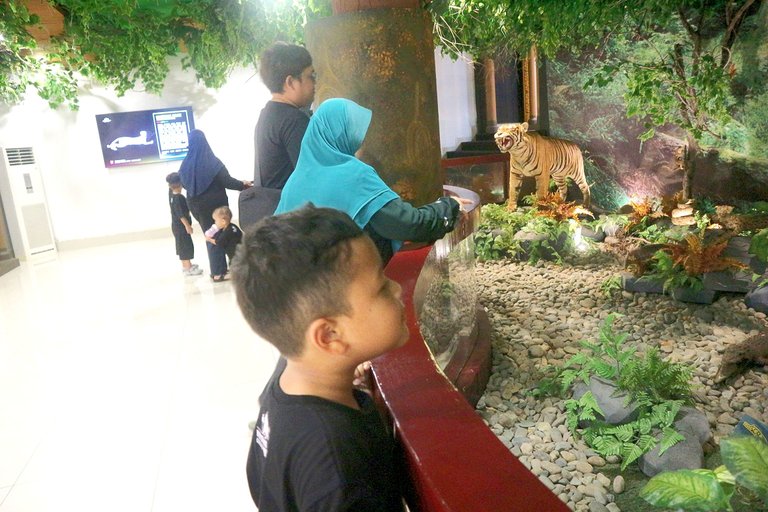

The Sumatran tiger is a unique and important subspecies of tiger with distinctive physical and behavioral characteristics. Although they play a vital role in their ecosystem as apex predators, they face multiple threats that require ongoing conservation efforts to ensure their survival in the wild.
The Sumatran tiger is the smallest tiger subspecies compared to tigers of other subspecies. Adult males can reach a length of around 230 cm (including tail) and weigh between 100-140 kg, while females are usually smaller. It has an orange base coat color with sharp and distinct black stripes. These stripes vary from individual to individual and help them camouflage in their natural habitat.
Sumatran tigers inhabit tropical rainforests, mountain forests, and peat swamp forests on the island of Sumatra. They can also be found in areas relatively close to water sources such as rivers and lakes. Sumatran tigers can be found in forests in Sumatra, including national parks such as Gunung Leuser National Park, Kerinci Seblat National Park, and Bukit Barisan Selatan National Park.
Sumatran tigers do not have a specific mating season, and mating can occur throughout the year. After mating, the female will be pregnant for about 93-112 days. A female can give birth to between 2-4 cubs in a single litter. The cubs are born blind and are completely dependent on their mother for food and protection.
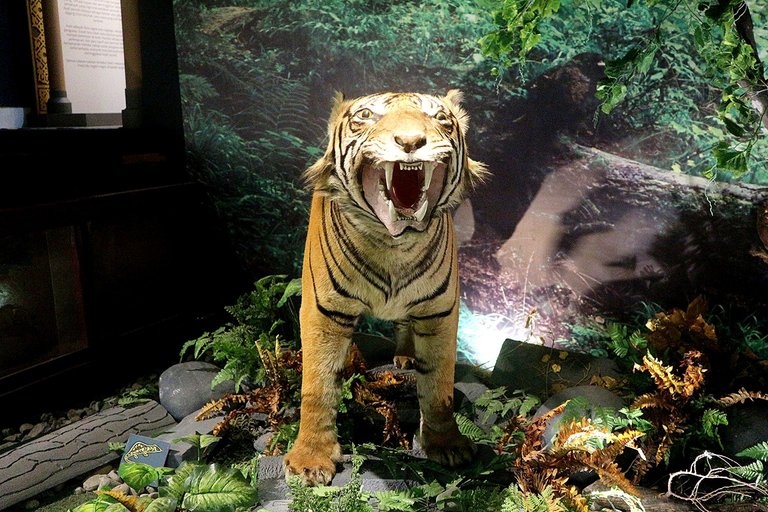
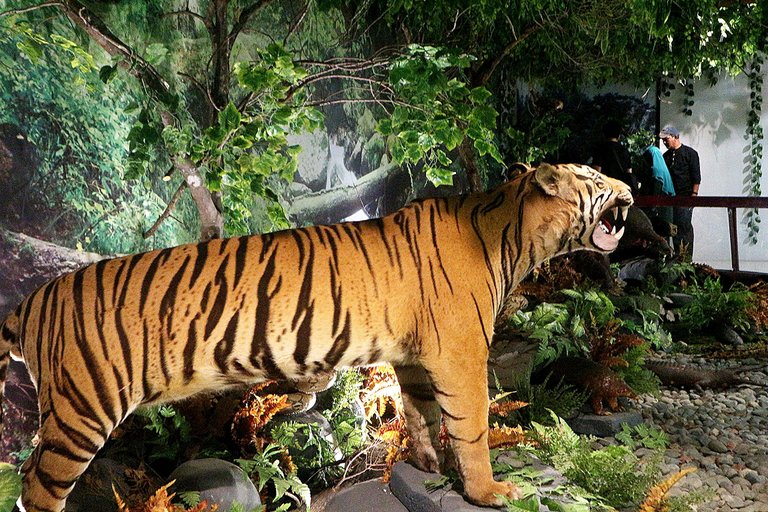
That's my story on this trip, hopefully our trip can be new knowledge for all of you, because history is a teacher for the next generation, so never forget history.
Thank you for visiting my writing, and don't forget to follow our next travel stories to interesting places that can be new knowledge for all of us.
Note: ("Place is not a destination, but seeing something new from a different side").
Dah, gitu aja.....,

My Social Media
HiveBlog
WorldPress
Youtube
PageFace
Facebook
Tiktok
Snack Video
Instagram
Twitter
WhatsApp
Congratulations, your post has been added to WorldMapPin! 🎉
Did you know you have your own profile map?
And every post has their own map too!
Want to have your post on the map too?
okay, I have visited worldmappin.com and marked the location on the map.
okay, thanks...
View or trade
BEER.BEERHey @sudutpandang, here is a little bit of from @isnochys for you. Enjoy it!BEER at dCity game to buy cards to rule the world.Did you know that <a href='https://dcity.io/cityyou can use
Thank you for your witness vote!
Have a !BEER on me!
To Opt-Out of my witness beer program just comment STOP below